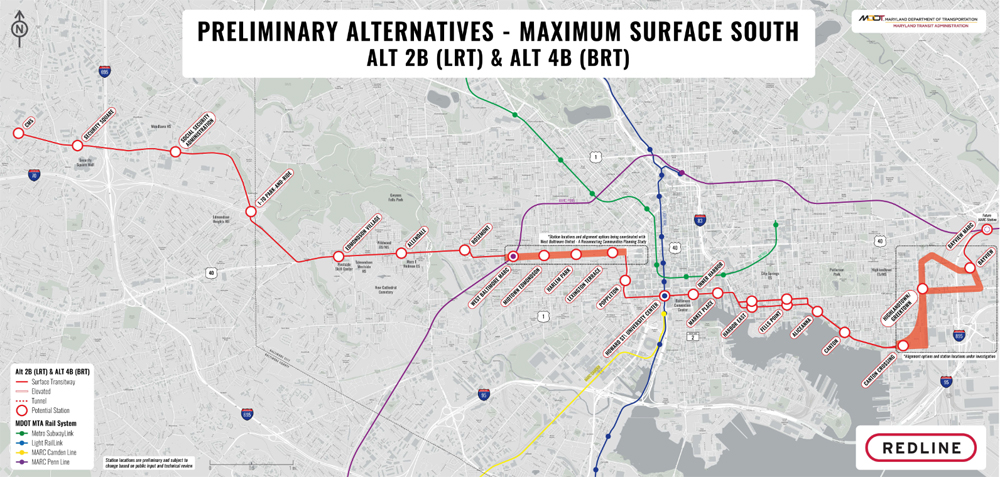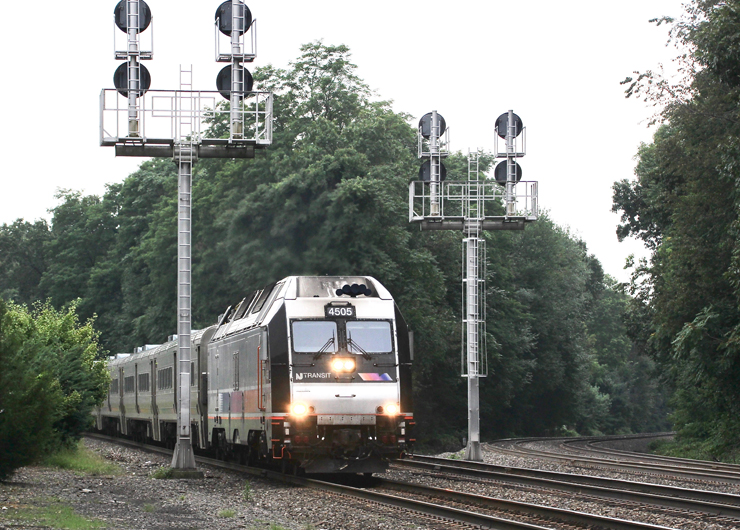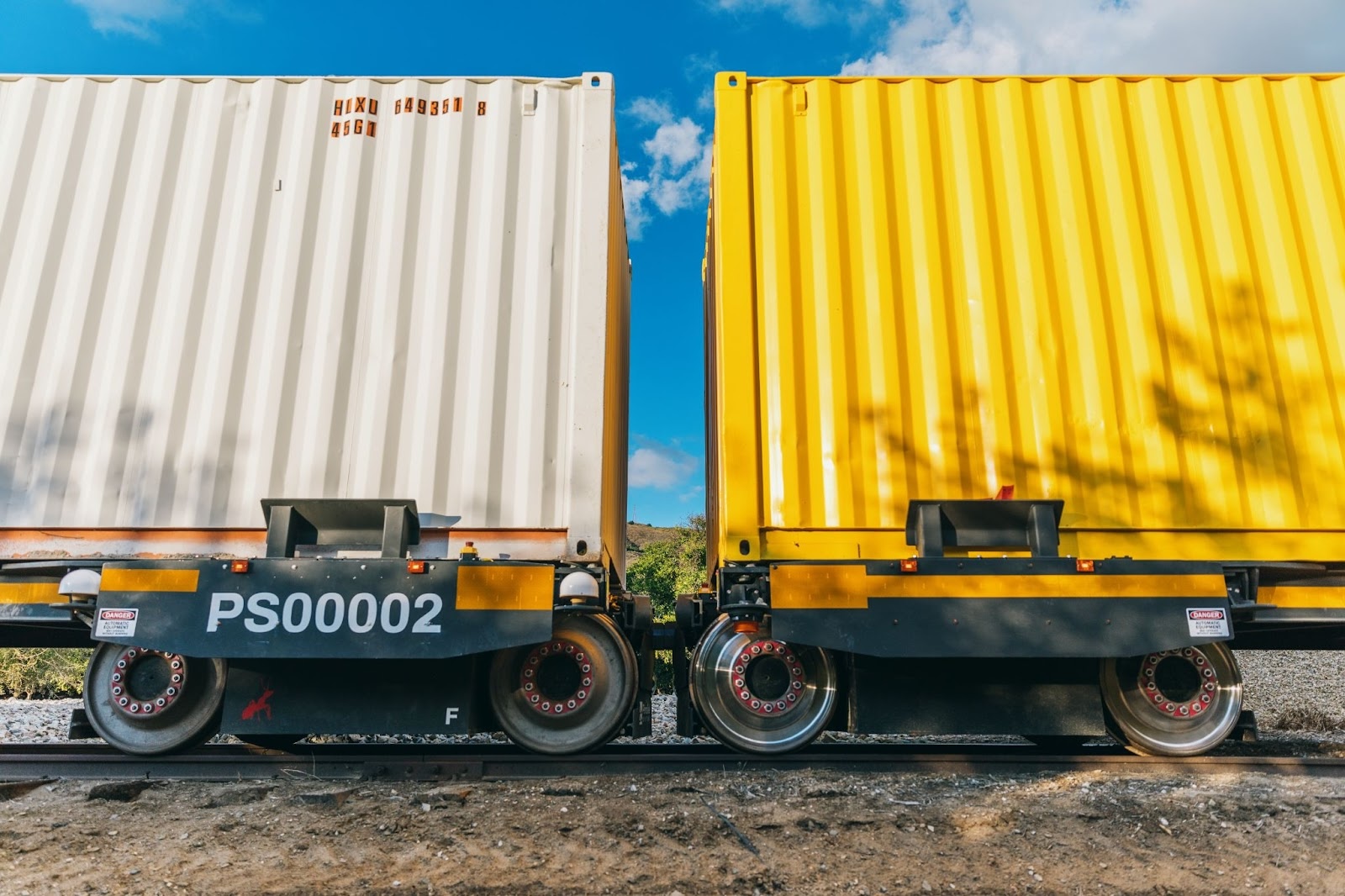
BALTIMORE — The planned Red Line transit project in Baltimore will be a light rail system, not bus rapid transit, Maryland Gov. Wes Moore said Thursday (June 27).
The nonprofit Baltimore Banner news site reported the decision ahead of an official announcement planned for today.
The Red Line project was killed by former Gov. Larry Hogan in 2015, but the proposal was part of a 25-year transit plan in 2020 and has been backed by Moore, who pledged to revive it during his gubernatorial campaign. Potential routes for the approximately 15-mile, east-west system were narrowed to three last year by the Maryland Transit Administration, but bus and light rail options were presented for each route [see “Maryland officials offer new route options …,” Trains News Wire, Sept. 29, 2023].
Moore told the Banner that residents indicated a strong preference for light rail rather than bus during outreach events that were part of the planning process: “It just became very clear that this is the mode of transportation that we were going to select.”
Light rail will be more expensive to build than a bus system, but Moore said he believes federal funding will help with those costs.














Houston METRO is cancelling the University Line (Blue Line) with rapid transit buses due to projected low ridership.
If the agency revert to the original light rail proposal over the same route between the University of Houston flagship campus in southeast Houston, Rice University near the Museum District (where the Red Line is crossed) and Houston Baptist University to the West Park area in the southwest, ridership projection would rise exponentially. Light rail is more popular than busses.
Light rail works. It’s jam-packed in Boston, Seattle and many other cities.
Yes, the article’s last seven words, “…..federal funding will help with these costs.”
Maybe federal funding would build the much-needed Second Avenue Subway in Manhattan and Bronx, at a cost of countless billions. Maybe federal funding will turn every subway/ el station in America into wheelchair accessible. Maybe this, maybe that. The problem is, the federal government is broke and can no longer print enough money to bail out the states and localities for every state and local need.